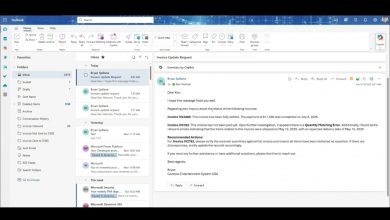VDI Value Proposition – Use Cases for Azure Virtual Desktop
Join Taswar Bhatti and Mahmoud Atallah as they explore Azure Virtual Desktop's security features and diverse use cases, from remote workloads to cost savings.
 Azure Virtual Desktop, formerly known as Windows Virtual Desktop, is a cloud-based virtualization service that provides users with a virtual desktop experience accessible from anywhere.
Azure Virtual Desktop, formerly known as Windows Virtual Desktop, is a cloud-based virtualization service that provides users with a virtual desktop experience accessible from anywhere.
Businesses of all sizes can leverage Azure Virtual Desktop for various use cases to enhance productivity, security, and flexibility.
Azure Virtual Desktop offers a versatile solution for businesses looking to modernize their desktop infrastructure, improve remote work capabilities, and enhance overall operational efficiency.
Join Taswar Bhatti and Mahmoud Atallah as they explore Azure Virtual Desktop’s security features and diverse use cases, from remote workloads to cost savings. Learn about its benefits for flexible workforces and software distribution, plus insights into costs and deployment prerequisites.
Use Cases and Customer Journeys
By understanding these buyer use cases, organizations can make informed decisions on adopting Azure Virtual Desktop to meet their specific business needs.
- Enable remote working – VDI divorces the desktop from local hardware. Users can access their apps from anywhere via any device. In the Covid era the need to enable work-from-home has become a strategic necessity. With the rise of remote work trends, Azure Virtual Desktop enables organizations to provide employees with secure access to their desktop environments from any device, anywhere in the world. This use case ensures seamless collaboration and productivity among remote teams.
- Standardization – VDI enables businesses to create and manage their own desktop images, so the business can create desktops with application sets tailored for certain user types, such as finance and HR, ideal for scenarios such as call centres where hundreds of staff all work with exactly the same application set.
- Scalable Infrastructure: Azure Virtual Desktop allows businesses to scale their desktop infrastructure based on demand without the need for significant hardware investments. This use case is beneficial for companies experiencing rapid growth or seasonal fluctuations in workload.
- Security and Compliance: VDI enables greater central control over desktop environments, centralizing the data security required for compliance while also ensuring continuity of operations in the event of disasters. By centralizing desktop environments on Azure Virtual Desktop, businesses can enhance data security and compliance measures. This use case is crucial for industries with strict regulatory requirements, such as healthcare and finance.
- Business Continuity: Azure Virtual Desktop serves as a reliable disaster recovery solution, allowing businesses to quickly restore desktop environments in case of unforeseen events. This use case ensures minimal downtime and uninterrupted operations during emergencies.
- Application Compatibility Testing: Organizations can use Azure Virtual Desktop to test the compatibility of applications across different operating systems and configurations. This use case helps in ensuring that critical business applications run smoothly without any compatibility issues.
- Migration and cost efficiency – Organizations undertaking a general cost optimization program through migrating enterprise IT infrastructure to the Cloud, can include desktop migration as part of this modernization. By moving desktop environments to the cloud with Azure Virtual Desktop, organizations can reduce hardware and maintenance costs associated with traditional desktop infrastructure. This use case helps in optimizing IT budgets and improving overall cost efficiency.
ROI
Forrester offers this business impact guide for VDI, defining key business case benefits:
- Simplified desktop management improves efficiency and allows for management of more devices in less time.
- Reduced end user downtime related to management and security issues.
- Streamlined application and patch management, saving more than an hour handling each device.
This includes a specific report for Microsoft’s Azure VDI:
- A three-year 210 percent return on investment and payback on the initial investment in as little as three months.
- Reduced IT costs for maintenance, deployment, and management by 59 percent.
- Reduced VDI licensing and infrastructure costs by up to 34 percent.
- Increased productivity by up to 22 person-hours through improved security response, connectivity, and user onboarding.



